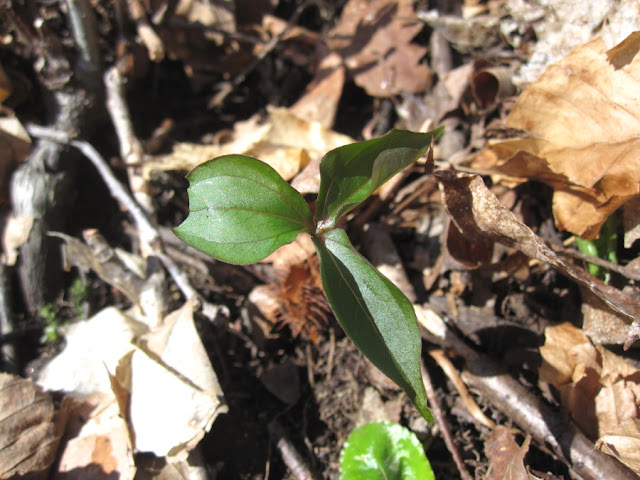 |
| An aggressive male chasing competitors away from an eligible female. |
Buffleheads are small, sharp, black and white ducks that appear in the Lakes Region in spring and fall. I'm not aware of them nesting in this area even though their reported breeding range includes central New Hampshire. They are one of only a few ducks that are monogamous (loons are another) that will keep the same mate for several years. An unattached female however, will be pursed by a group of males, each trying to impress the female with its beauty and physical abilities.
 |
| Four drakes (males) courting a single hen. |
One such display is called head-bobbing, which the males were using to flatter the lone female on the day I saw them. I was able to catch a couple of examples on this video where several drakes show off their head-bobbing prowess: https://youtu.be/DETEk5BUwik
Another interesting aspect of buffleheads is that they nest in tree cavities, particularly those that were excavated by Norther Flickers, which means the bufflehead's range closely aligns with the flicker's.
 |
| Another mating behavior to impress a mate: the neck extension. |
Windy and cool weather this week wasn't conducive to boating so I stayed mostly on land. Looking for ways to get outside in lightly traveled areas, I decided to start my conservation easement monitoring early, in some safe, local areas. Now is a good time before the leaves come out and obscure those hard to locate survey pins and tree blazes (it's also a bonus to do it before the black flies are out). This is a relatively new axe blaze, perhaps 40 years old; they can be discernible much longer.
 |
| Axe blaze on a slow-growing eastern hemlock. |
Axe blazes on trees have been used for centuries to make a lasting indication of a property boundary, long before iron survey pins were employed, and they are often easier to locate. But an unexpected bonus of searching the ground for survey pins hidden among the leaves was seeing this just-sprouting violet, already blooming deep in the woods.
 |
| A Downy Yellow Violet just erupting in a sunny spot provides an early start to wildflower season. |
This was in a hardwood forest where the lack of leaves exposed the forest floor to warming sunshine all day long, giving the flower a nice early start. And right next to the violet I caught sight of this three-leaved plant just sprouting.
 |
| Perhaps a trillium? |
It's too small to be sure but I think it just might be the first trillium of the year pushing its way up through last year's leaf litter. I'll keep an eye out for others to verify because I don't expect to be back to this corner of the forest again this year.
I've mentioned previously the timber that was sunk in Lake Wicwas after the hurricane of 1938 to preserve it from rot, and while monitoring near the end of the lake where the saw mill was located I saw almost a dozen old logs floating up.
 |
| Saw logs left near the saw mill on Lake Wicwas. |
It's something not likely to be noticed once the trees leaf out and the lily pads fill in this shallow cove. If you're getting outdoors these days, keep your eyes open; there's so much more to see now than in mid-summer when many interesting sights are hidden behind all that dense foliage.
Yes, we're seeing tree flowers and wildflowers now, but it doesn't mean there's not a glimpse of winter still to be seen here in the second half of April.
 |
| Red Maple flowers in Saturday's April (snow) shower. |
 |
| I don't often see snowflakes on spider webs. |

No comments:
Post a Comment